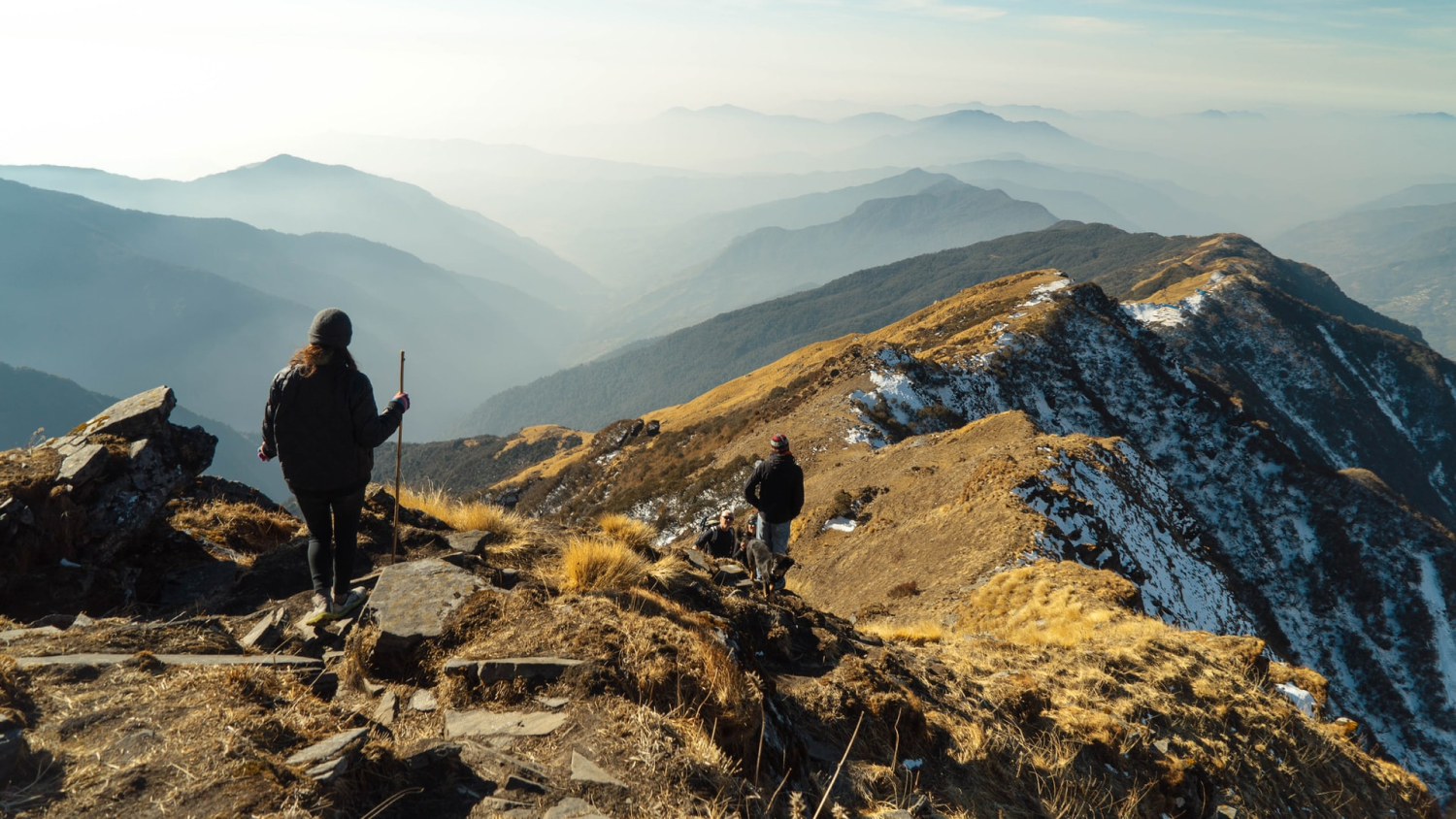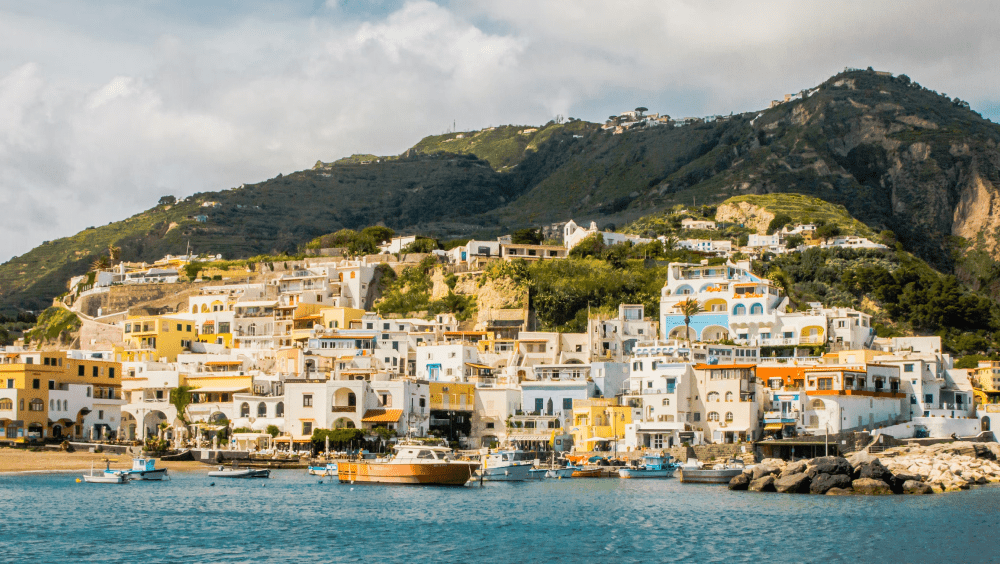Bucharest Sights: a complete guide to the People’s House, the Triumphal Arch and the Romanian Athenaeum
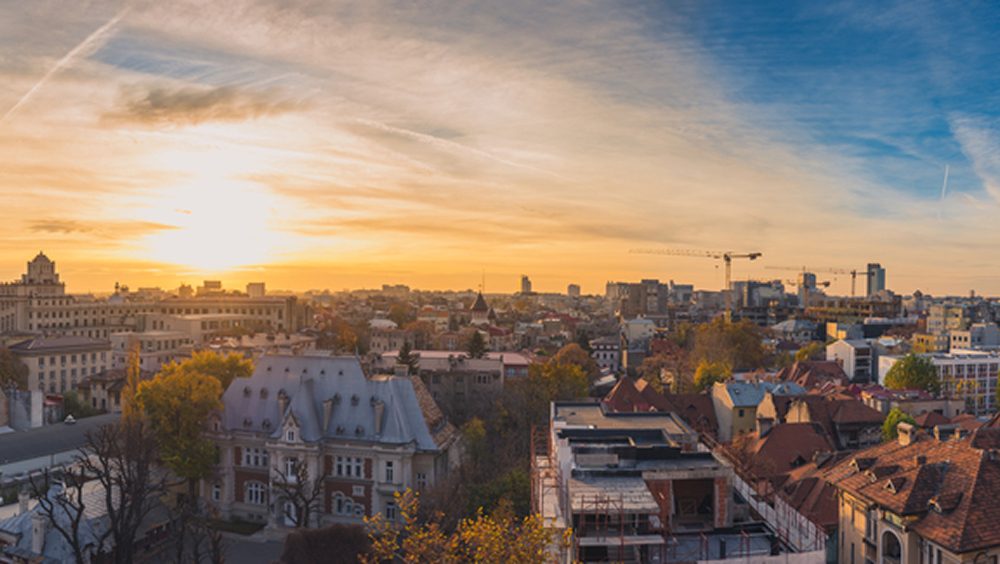
Bucharest, a city with a rich history and diverse architecture, is waiting for you to discover its secrets. From imposing monuments to oases of greenery and fascinating museums, Romania’s capital has something to offer for every visitor.
This guide will take you to the most important sights, providing essential information and practical tips for a memorable experience. Get ready to explore the People’s House, the Triumphal Arch, the Romanian Athenaeum and many other fascinating places!
- Parliament Palace (People’s House): the architectural colossus of Bucharest
- Triumphal Arch: the symbol of victory and national unity
- Romanian Athenaeum: the capital’s cultural jewel
- Cotroceni Palace: presidential residence and national museum
- Old Center: the heart of Bucharest
- Calea Victoriei Bucharest
- CEC Palace
- National Military Circle Palace
- Bucharest Parks: green oasis to visit in Bucharest
- The capital’s museums: a journey through history, art and culture
- Historical buildings and monuments: witnesses of the capital’s past
- Activity ideas – what to do in Bucharest
- A day in Bucharest – a practical guide to sightseeing
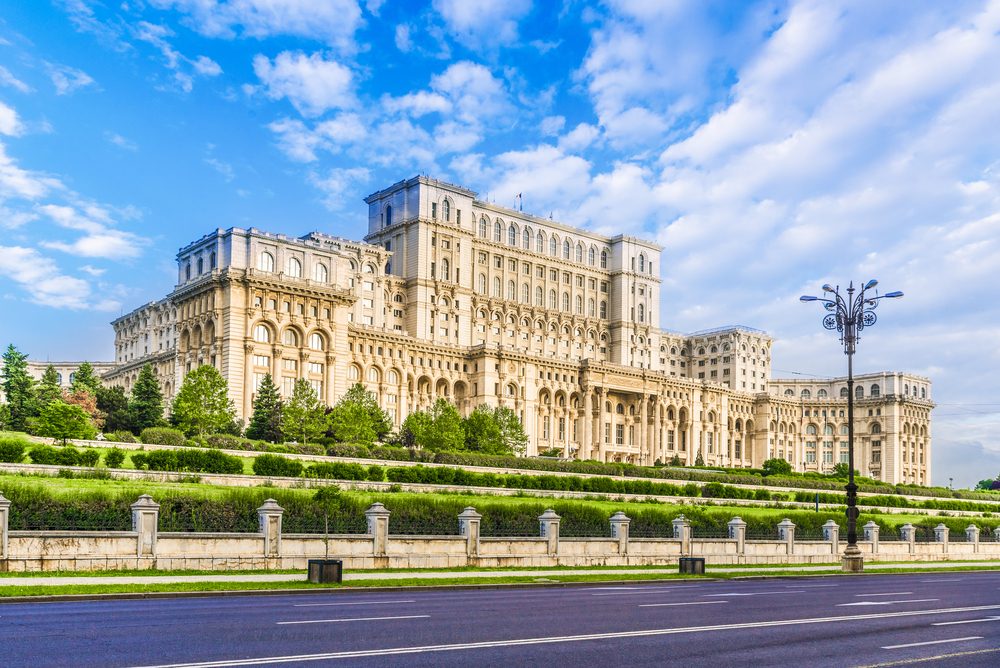
Parliament Palace (People’s House): the architectural colossus of Bucharest
The Palace of Parliament, also known as the People’s House, is undoubtedly one of the most impressive and controversial sights in Bucharest. This monumental building, the second largest in the world after the Pentagon, is a testament to the ambitions of the communist regime led by Nicolae Ceausescu.
The construction of the Parliament Palace started in 1984 and required huge efforts. To make way for this architectural colossus, more than 7 km² of Bucharest’s historic center was demolished, including numerous heritage buildings, churches and monasteries.
Over 20 000 workers worked in three shifts to complete the project, using almost exclusively Romanian materials. The size of the Palace is truly impressive:
- Built area: 365.000 m²
- Height: 84 meters
- Depth: 92 meters (including underground levels)
- Over 1,000 rooms
- 3,500 tons of crystal in 480 chandeliers
- About 1 million m³ of marble
Despite controversy over its origins, the Parliament Palace has become a symbol of Bucharest and a major tourist attraction. Visitors can explore some of its vast interiors on guided tours, admiring the opulent decorations, impressive chandeliers and panoramic views of the city from the upper terrace. Beyond its imposing appearance, the building is home to several important institutions:
- Romanian Chamber of Deputies and Senate
- National Museum of Contemporary Art
- Parliament Museum and Library
- Various conference and exhibition halls
To visit the Parliament Palace, advance booking and a valid ID are required. The tours are available in several languages and offer an insight into Romania’s recent history and the transformations the country has undergone since the fall of communism.
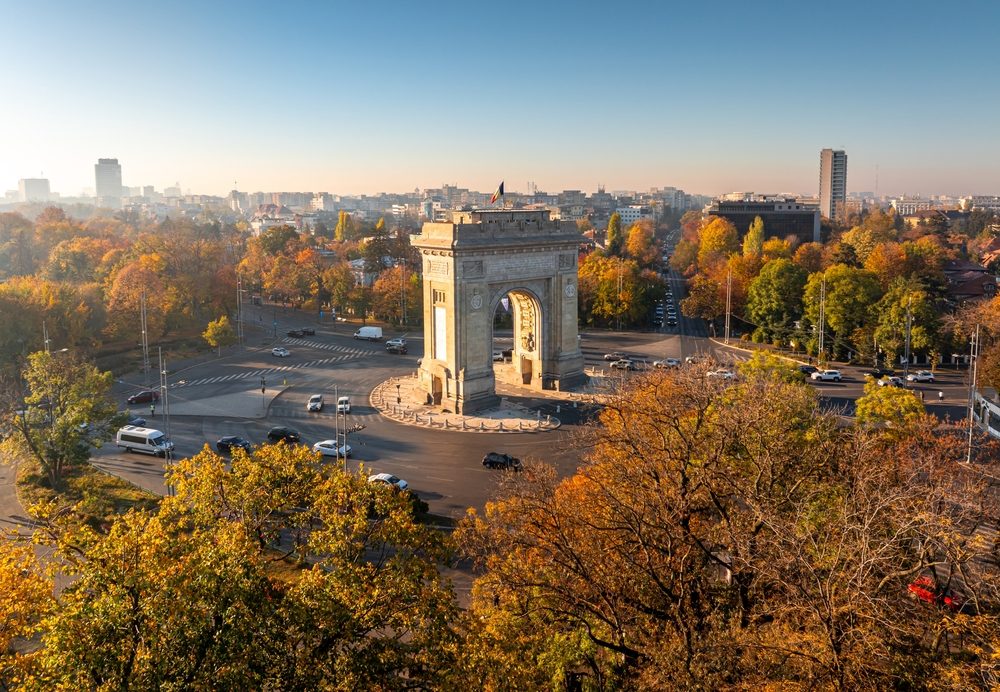
Triumphal Arch: symbol of victory and national unity
While the Palace of Parliament is a controversial legacy of the communist era, the Triumphal Arch is a monument that celebrates Romania’s more distant history and symbolizes national unity and victory. Situated in the north of Bucharest, at the intersection of major boulevards, this imposing edifice offers a different perspective on the capital’s history. Today’s Arc de Triomphe, inaugurated in 1936, has a fascinating history worth exploring:
- The first wooden arch was hastily built in 1878 to mark Romania’s independence.
- A second wooden version was built in 1922, after the First World War.
- The current granite structure was completed in 1936, according to plans by architect Petre Antonescu.
At 27 meters high, the Arc de Triomphe impresses with its size and architectural details:
- The facades are decorated with sculptures by famous Romanian artists.
- Bas-reliefs depict important scenes from Romanian history.
- Inside there is a small exhibition about the history of the monument.
Unlike the grandeur of the Parliament Palace, the Arc de Triomphe offers a more intimate and accessible experience for visitors. At certain times of the year, tourists can climb up to the observation platform on the roof, which offers a spectacular view of northern Bucharest.
For the full experience, visitors can combine a stop at the Arc de Triomphe with a stroll in nearby Herăstrău Park (King Michael I Park). This vast green area offers a tranquil oasis in the middle of the bustling city and is home to other attractions such as the Village Museum.
Planning a visit to Bucharest and need transportation? Enterprise offers mobility solutions tailored to your needs!
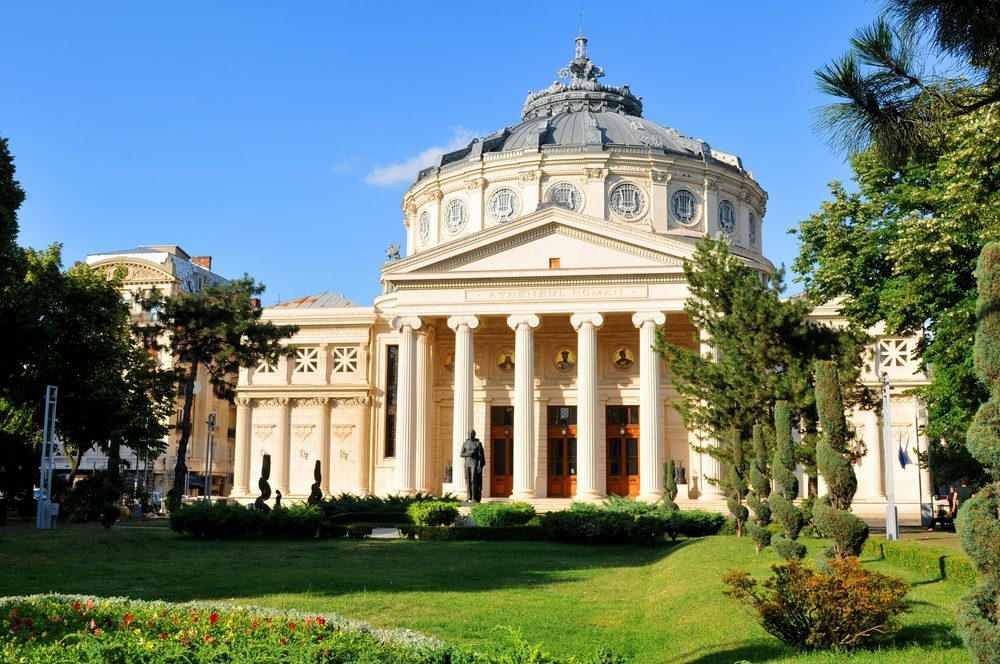
The Romanian Athenaeum: the capital’s cultural jewel
The Athenaeum is the heart of the city’s musical and artistic life. Built between 1886 and 1888, the Romanian Athenaeum impresses with its neoclassical architecture and eclectic influences, the work of French architect Albert Galleron, the majestic dome with a diameter of 41 meters, the Ionic colonnade dominating the main facade and the exceptional acoustics of the concert hall.
Inside the Athenaeum, visitors discover a world of artistic refinement, with the 652-seat circular concert hall, the monumental 70-meter-long fresco depicting the history of the Romanian people, the foyer decorated with marble columns and Venetian mirrors, and the spiral marble staircases leading to the upper lobbies.
The Romanian Athenaeum plays a vital role in the cultural life of Bucharest, hosting concerts of the George Enescu Philharmonic, being the main stage of the George Enescu International Festival and organizing recitals, conferences and other prestigious cultural events.
Its location on Calea Victoriei, close to other important sights such as the National Art Museum of Romania and the Central University Library, makes the Romanian Athenaeum a central point of any cultural tour of the capital.
We are waiting for you in one of our working points. We make booking quick and easy. Rent your car here.
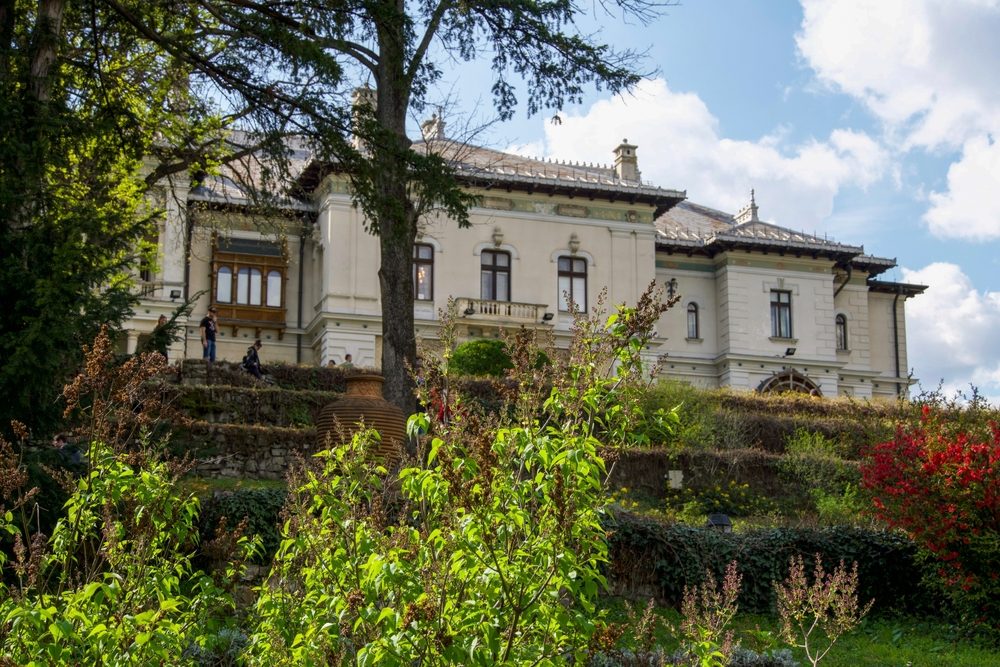
Cotroceni Palace: presidential residence and national museum
Cotroceni Palace has a rich history spanning more than three centuries. Originally built as a monastery in 1679 by Șerban Cantacuzino, it was later transformed into a royal residence during the reign of Carol I. Later, it was extended and modernized under Queen Maria, and after 1990 it became the seat of the Romanian Presidency.
Visitors can explore two distinct aspects of the Cotroceni Palace. On the one hand, the Cotroceni National Museum, housed in the historic wing of the palace, showcases the restored royal apartments, including those of Queen Maria, and exhibits collections of decorative art, furniture and personal belongings of the royal family.
The Presidential Administration, on the other hand, occupies the modern wing of the palace, where the offices of the President and his staff are located, and where official ceremonies and diplomatic meetings are organized.
The architecture of the Cotroceni Palace reflects its various historical stages, ranging from elements of Brânco-Venetian architecture from the monastery period, to neoclassical and Art Nouveau influences added during the royal period, as well as modern additions to accommodate the presidential functions.
For the full experience, visitors can also explore the palace gardens, originally designed by Queen Marie, the Cotroceni Church, part of the original monastery complex, and the surrounding Cotroceni neighborhood, known for its elegant architecture.
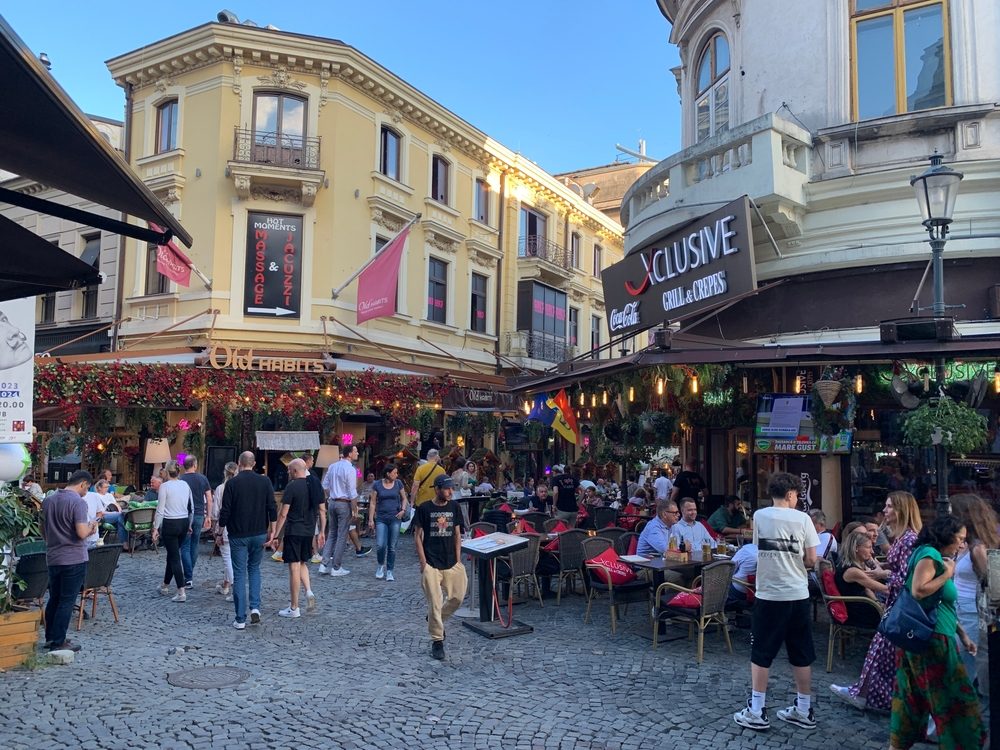
Old Center: the heart of Bucharest
The Old Town is the vibrant and lively side of the city. Also known as Lipscani, it is the historical and cultural heart of Bucharest, characterized by narrow pedestrian streets paved with cubic stone and buildings dating back to the 18th-19th centuries, many of which have been recently restored.
The area impresses with a fascinating mix of architectural styles, from neoclassical and baroque to Art Nouveau, and is also the center of Bucharest’s nightlife and food scene.
Notable attractions of the Old Center include Manuc’s Inn, a 19th-century inn converted into a restaurant and hotel, the Stavropoleos Church, an architectural jewel in the Brancovan style, the Macca-Villacrosse Passage, known for its yellow stained-glass roof, and the Old Court, the ruins of the first royal court of Bucharest.
The Old Town offers a less structured and more spontaneous experience, allowing visitors to explore freely, without a guide or fixed schedule. Here there are plenty of opportunities for authentic interactions with locals and a variety of restaurants, cafes and bars to suit all tastes. The area also abounds in souvenir shops, art galleries and unique bookshops.
If you’re passionate about history, then you must discover the charms of Romania’s historic cities. Here are 10 examples of historical cities not to be missed!
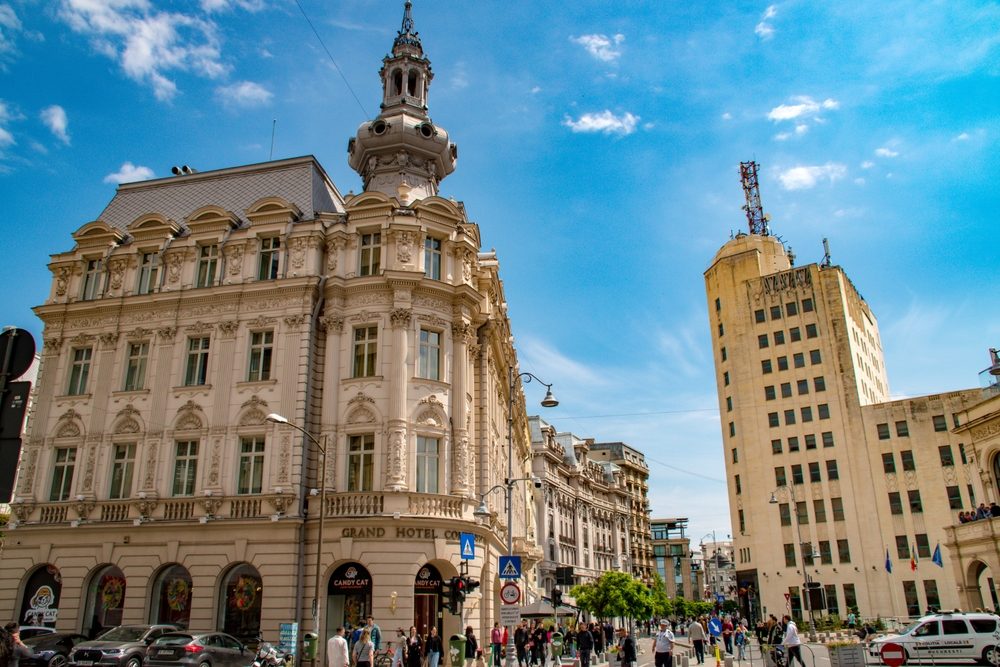
Calea Victoriei Bucharest
Calea Victoriei offers a more refined experience, combining history and modernity in a unique way. This street has a rich history spanning more than three centuries, originally built in 1692 under the reign of Constantin Brâncoveanu, renamed Calea Victoriei in 1878 after the War of Independence, and witnessing major historical events and the architectural evolution of the capital.
Along the Victoriei Way, visitors can admire a number of emblematic buildings and institutions, such as the Royal Palace, the current National Art Museum of Romania, the Romanian Athenaeum, the Romanian Athenaeum, the CEC Palace – a remarkable example of eclectic architecture, the National Museum of Romanian History and Casa Capșa, the famous café and confectionery with a history of over 150 years.
In contrast to the areas presented above, Calea Victoriei offers an elegant promenade, ideal for relaxing strolls, upscale shops and boutiques of local designers, historic hotels such as the Athenee Palace Hilton, but also a perspective on the architectural evolution of Bucharest over the last three centuries.
Calea Victoriei plays an important role in Bucharest’s contemporary cultural life, hosting events such as Museum Nights and street festivals, being a favorite venue for parades and national celebrations, and providing an open-air stage for artists and musicians.
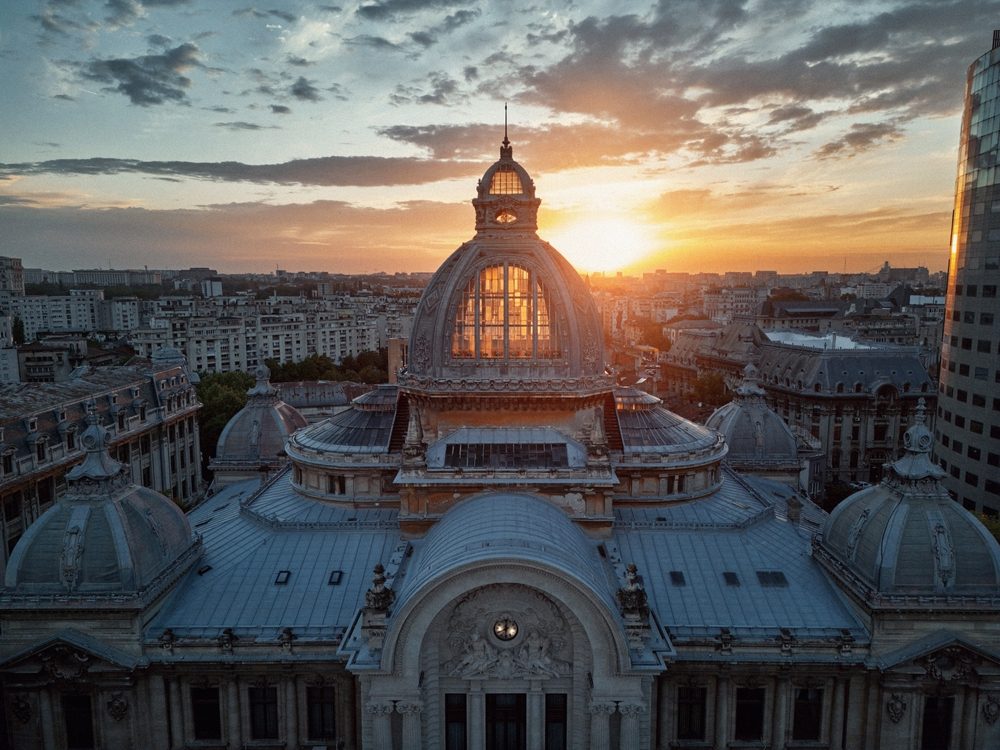
CEC Palace
Located on Calea Victoriei, the CEC Palace is a symbol of Bucharest’s eclectic architecture. Built between 1896 and 1900, the palace was the headquarters of the House of Savings and Consignments (CEC), an important financial institution in Romania’s history.
The palace’s architecture is impressive, combining neoclassical elements with Art Nouveau details. The main façade is dominated by a glass and metal dome, while the interior is decorated with marble, mosaics and sculptures.
Over time, the CEC Palace has witnessed important historical events and has become a symbol of financial stability and prosperity. Today, the palace houses the headquarters of CEC Bank and is open to the public for visits. Notable features of the CEC Palace include:
- Central glass and metal dome
- Main facade with sculptures and columns
- Council hall, decorated with marble and mosaics
- Monumental staircase
Visitors can admire the palace architecture and learn more about the history of CEC Bank and its role in Romania’s economic development. CEC Palace is an important tourist attraction on Calea Victoriei and a symbol of Bucharest’s architectural heritage. Not far from the CEC Palace, also on Calea Victoriei, is another emblematic building with a history linked to the Romanian army.
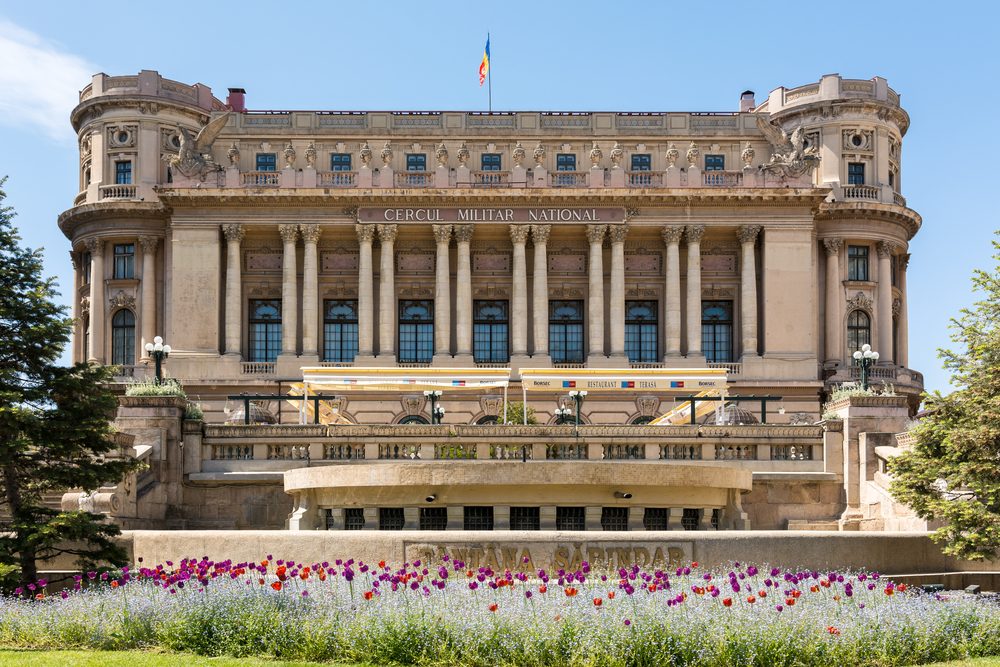
Palace of the National Military Circle
The Palace of the National Military Circle, also located on Calea Victoriei, is an emblematic building of Bucharest, with a rich history and impressive architecture. Built at the end of the 19th century, the palace was conceived as a meeting and recreation place for Romanian army officers.
The palace’s architecture is a mixture of neoclassical and eclectic styles with French influences. The main façade is imposing, with columns, balconies and decorative sculptures. The interior is elegantly decorated with ballrooms, libraries and reading rooms.
Over the years, the National Military Circle Palace has hosted many important cultural and social events, becoming a symbol of military life and Bucharest’s elite. Today, the palace is open to the public and hosts cultural events, concerts and exhibitions. Notable features of the National Military Circle Palace include:
- Sumptuously decorated ballroom
- Library with an impressive collection of books
- Reading room, with period furniture
- The interior garden with fountains and sculptures
Visitors can admire the palace’s architecture, participate in cultural events and learn more about the history of the Romanian army and its role in society. The National Military Circle Palace is an important tourist attraction on Calea Victoriei and a symbol of Bucharest’s cultural heritage.
Bucharest Parks: green oasis to visit in Bucharest
.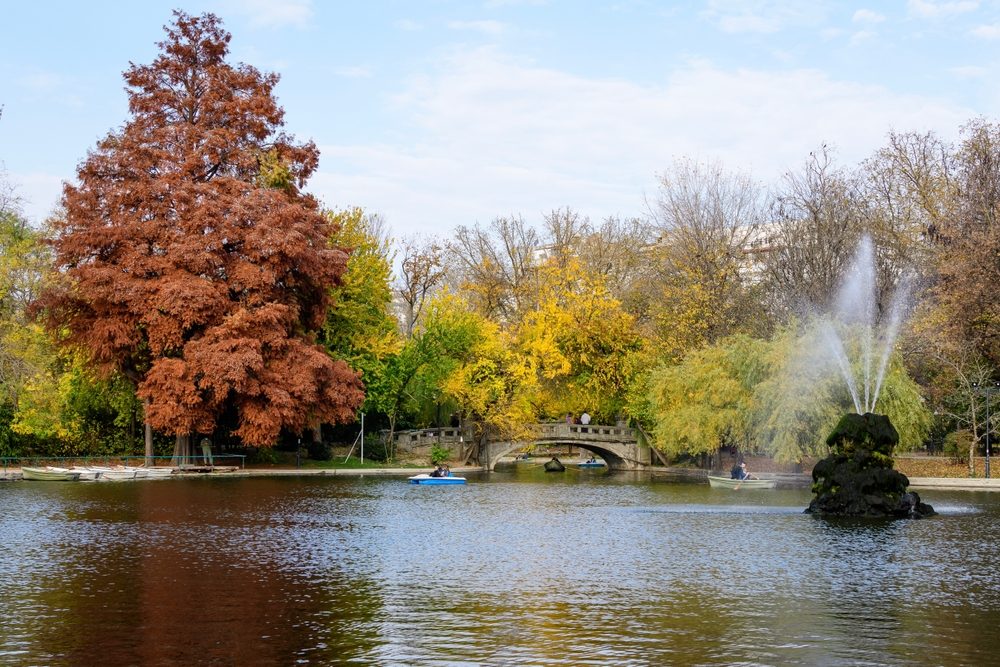
Bucharest, often called Little Paris, is also home to plenty of green spaces, parks and gardens that offer an oasis of peace and relaxation amid the hustle and bustle of the city. These parks are ideal places for walks, sports activities or simply enjoying nature.
Cișmigiu Park
Cișmigiu Park, located in the center of Bucharest, is the oldest and one of the most beautiful parks in the city. Built in the 19th century, the park offers a variety of attractions, including a boating lake, a rose garden, a gazebo and numerous walking paths.
Herăstrău Park
Herăstrău Park, also known as King Mihai I Park, is the largest park in Bucharest, located in the northern part of the city. The park offers a variety of activities, including boating on Lake Herăstrău, visiting the Village Museum, cycling and jogging.
IOR Park
IOR Park, also known as Alexandru Ioan Cuza Park, is a large park in the eastern part of Bucharest. The park offers a variety of attractions, including a boating lake, an island with a gazebo, a children’s play area and numerous walking paths.
Văcărești Park and Delta
The Văcărești Natural Park, also known as the Văcărești Delta, is a protected natural area located in the middle of Bucharest. This urban wetland is home to a variety of bird, animal and plant species, offering a unique nature watching experience.
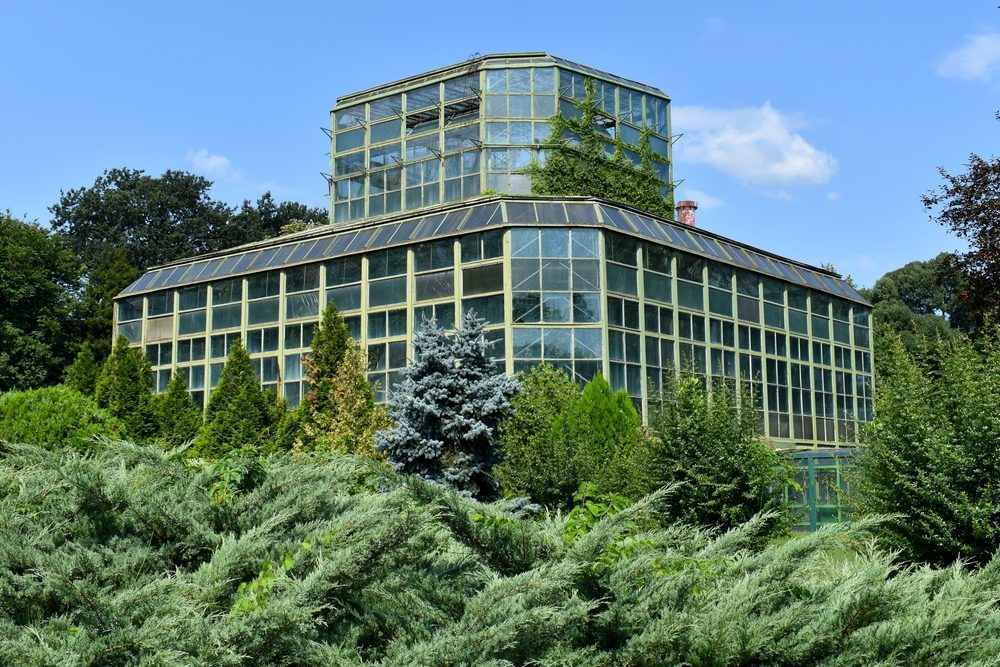
Botanical Garden Bucharest
The Dimitrie Brândză Botanical Garden of the University of Bucharest is an oasis of greenery and a center of scientific research, located in the heart of the capital. Founded in 1856, the 17-hectare garden is home to an impressive collection of plants from all over the world. The Botanical Garden is divided into several thematic sections, including:
- Systematic garden, presenting plants according to their taxonomic classification
- The geographical garden, presenting plants from different regions of the world
- The ornamental garden, featuring decorative plants and flowers
- Greenhouses, featuring tropical and subtropical plants
The main attractions of the Botanic Garden include:
- Botanical Museum, featuring a collection of dried plants, seeds and fruits
- The Herbarium, containing a collection of over 500,000 plant specimens
- The Water Lily Lake, home to a variety of water lilies and other aquatic plants
- The Japanese Garden, featuring a collection of Japanese plants and design elements
The Botanical Garden is an ideal place for relaxing walks, studying and observing nature. The garden also organizes cultural and educational events such as flower exhibitions, gardening workshops and botany courses.
Visitors can admire the diversity of plants, learn more about botany and spend time in nature. The Botanical Garden is an important tourist attraction in Bucharest and an ideal place to relax and connect with nature. To better understand Romanian history, art and culture, we invite you to explore the capital’s museums.
If you’re at least 21, choose to rent a van suitable for 2 families from Enterprise. Enjoy extra comfort for the whole trip while saving money.
The capital’s museums: a journey through history, art and culture
Bucharest, Romania’s capital, offers a rich cultural experience through the diversity and quality of its museums. These institutions reflect the country’s complex history, vibrant art and cultural heritage, offering visitors a deep insight into Romanian identity.
“Dimitrie Gusti” Village Museum
The Village Museum is definitely one of the best choices, considering the luxury of combining a walk in nature with a museum that simulates Romanian village life, according to the period and traditional area. There are over 150 houses to explore. It is the perfect choice for the little ones, but also for foreign tourists, who can experience village life live and understand ancient customs. Key points:
- Immersive experience in the authentic Romanian village atmosphere
- Architectural and ethnographic diversity
- Demonstrations of traditional crafts and folklore events
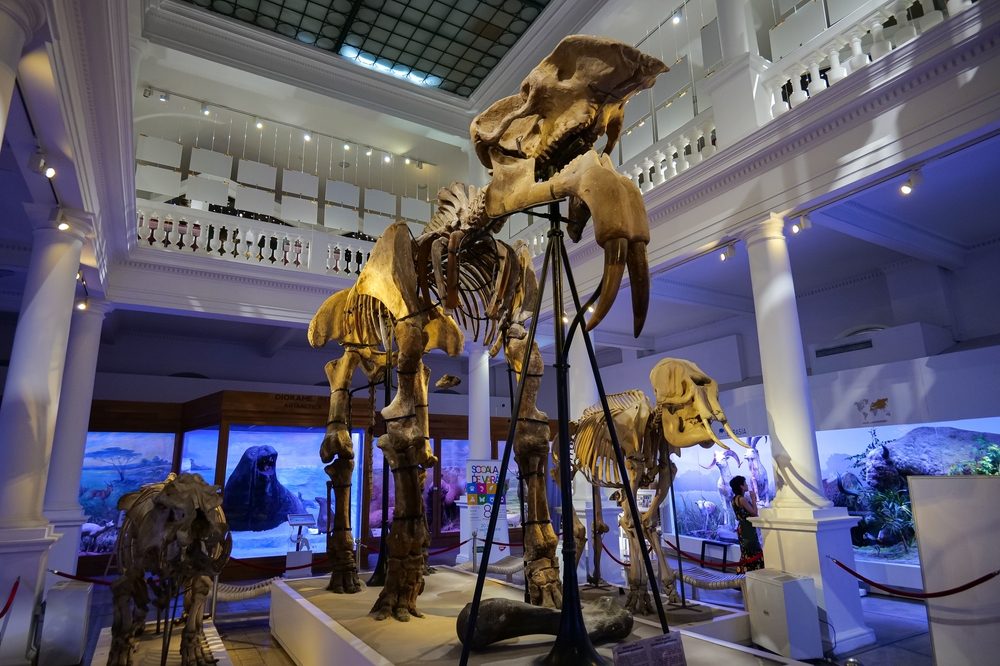
Grigore Antipa National Museum of Natural History
Founded in 1830, the Antipa Museum is one of Romania’s longest-established biodiversity research and public education institutions. Easily accessible in the center of Bucharest, it boasts an impressive collection of mammals, birds, molluscs, fish, fossils of various types, various minerals and coins belonging to Greek, Roman and Byzantine peoples. It is one of the most popular museums and an ideal place to visit if you are fascinated by nature and animals. Main attractions:
- Spectacular dioramas recreating natural habitats
- Interactive educational exhibitions
- Collection of dinosaur fossils and rare species
MARe – Museum of Recent Art
The Museum of Recent Art is the perfect destination for those who are passionate about everything that is artistic creation or modern design. The permanent collection builds a unique journey through Romanian art, from the period of the communist dictatorship to the 1989 Revolution, followed by the influence of political changes on the social aspect. The MARe collection includes over 550 works by Romanian artists: paintings, sculpture, installation, photography, photography, objects, collages, conceptual art and video. MARe addresses contrasting themes of Romanian art, making it the perfect visit for an artistic update. Distinctive elements:
- Modern architecture and flexible exhibition spaces
- Innovative approach to presenting contemporary art
- Exhibitions reflecting social and political changes in Romania
Ceausescu House – Spring Palace
Ceaușescu House was the private residence of Nicolae and Elena Ceaușescu and their children, Nicu, Zoia and Valentin, for almost 25 years during communism. Although a sore point in Romanian history, it tells a true story of period luxury, excess and selfishness.
The dwelling was built in the mid-1960s and deserves to be explored especially by new generations, for a different perspective of Romanian communism, a sharp difference between the cult of personality and the life of ordinary people.
The exhibition also impresses with a vast collection of paintings by Octav Băncilă, Camil Ressu, Rudolf Cumpăna, Dumitru Ghiață, George Baron Lowendal, as well as a lot of tapestries or handmade mosaics. A once in a lifetime visit you won’t soon forget. Highlights:
- Almost intact conservation of the original decor and furnishings
- The impressive collection of Romanian art
- Insight into the cult of personality and propaganda of the communist regime
Astronomical Observatory
The Observatory can become the perfect place to visit in the evening, after 6pm, when the rest of the museums are already closed. Why? With its facilities and facilities, like a window open to the sky, it offers all visitors the opportunity to watch the celestial vault through a telescope.
You can admire stars, planets, constellations, a profound experience for both children and adults. This month, Jupiter can be seen every clear evening. Experiences on offer:
- Observing celestial bodies through professional telescopes
- Multimedia presentations on recent astrophysical discoveries
- Practical workshops for astronomy enthusiasts
Cotroceni Museum in Bucharest
Housed in the Cotroceni Palace, this museum offers an insight into the evolution of the modern Romanian state. Visitors can explore restored royal apartments and admire collections of decorative art and historic furniture. Points of interest:
- Unique combination of royal history and contemporary presidential functions
- Architecture reflecting different historical periods
- Historic gardens, designed by Queen Marie
Kitsch Museum in Bucharest
This unconventional museum explores the less formal side of Romanian aesthetics and tastes. It offers an ironic and self-reflexive perspective on Romanian cultural identity. Distinctive elements:
- Eclectic collection of objects considered in bad taste
- Thematic sections, such as religious kitsch or Dracula as a tourist brand
- Critical approach to the evolution of aesthetic tastes in Romania
Villa Minovici
Also known as the Dr. Nicolae Minovici Folk Art Museum, this villa offers a glimpse into the life of the bourgeoisie in the early 20th century, combined with an impressive collection of Romanian folk art. Main attractions:
- Architecture combining traditional and Art Nouveau elements
- Diverse collection of folk costumes, ceramics and traditional fabrics
- Preserving the authentic atmosphere of a period home
Bucharest Museum – Șuțu Palace
Housed in the imposing Șuțu Palace, this museum offers a complete overview of Bucharest’s history, from its origins to the present day. It is the ideal place to understand the capital’s evolution over the centuries. Highlights:
- Impressive neo-Gothic architecture
- Various exhibits illustrating the urban and cultural development of Bucharest
- Art collections, historical documents and archaeological artifacts
Bucharest’s museums offer a fascinating journey through Romanian history, art and culture. Whether you’re passionate about contemporary art, natural history, folk traditions or astronomy, you’re sure to find institutions that will captivate you and enrich your experience in Romania’s capital.
Need a fast car in Bucharest? Book online now and hit the road worry-free – simple, fast and secure!
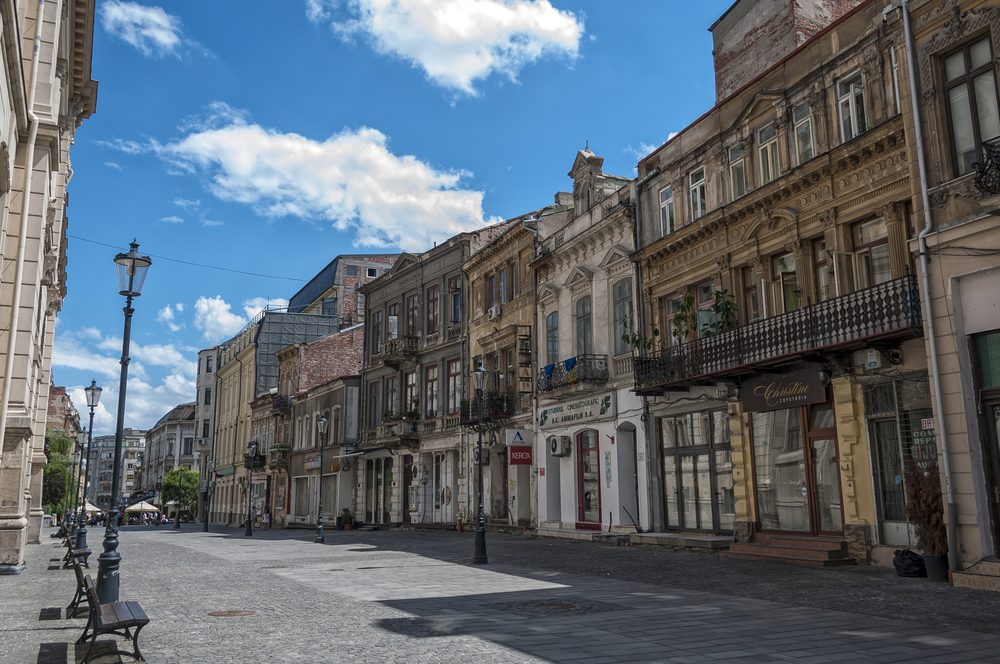
Historic buildings and monuments: witnesses of the capital’s past
Bucharest, a city with a rich and complex history, is dotted with historic buildings and monuments that offer a window into its fascinating past. These structures are not just tourist attractions, but also testaments to the architectural and cultural evolution of Romania’s capital.
Melik House
The Melik House, built in 1760, is the oldest house in Bucharest that has preserved its original form. This building is a remarkable example of old Armenian and Romanian architecture.
- Architectural style: combination of Armenian and Romanian elements
- Current function: houses the Theodor Pallady Museum
- Historical importance: provides insight into 18th century urban life
Theodor Aman House
Former home and studio of the painter Theodor Aman, this house-museum offers a glimpse into the artistic life of Bucharest in the late 19th century.
- Architectural style: eclectic, with neoclassical elements
- Attractions: artist’s studio, collection of paintings and personal objects
- Cultural significance: illustrates the development of modern Romanian art
Storck House
The Storck House is an example of Art Nouveau architecture in Bucharest, built at the beginning of the 20th century and transformed into a museum dedicated to the Storck family of artists. Combining Art Nouveau elements with traditional Romanian influences, it houses the family’s sculptures and paintings and offers insights into inter-war cultural life.
- Architecture: Art Nouveau with Romanian influences
- Collection: sculpture and painting Storck
- Importance: insight into interwar culture
Other notable examples of historic architecture in Bucharest:
- Cantacuzino Palace – French Baroque style
- Cesianu House – neoclassical style
- Manuc’s Inn – historical inn, restaurant and hotel
- Stavropoleos Church – Brancovenetian architecture
Bucharest’s historic buildings and monuments reflect diverse cultural and architectural influences, offering a journey through the capital’s history. From old houses to Belle Époque palaces, these structures invite visitors to discover fascinating stories. To plan your time in Bucharest, explore a variety of activities related to the city’s heritage.
Activity ideas – what to do in Bucharest
Bucharest awaits you with many experiences, from strolls through historic neighborhoods to discovering local cuisine, outdoor activities and vibrant nightlife. If you want to make the most of your time in the capital, here are some suggestions tailored to your style of exploration.
Discover the charm of historic neighborhoods
Leave the Old Town for another day and walk through the Cotroceni, admiring the peaceful villas and gardens. In the Armenian Quarter you’ll discover a special atmosphere and fascinating stories, while in the Jewish Quarter you can visit synagogues and learn about the city’s multicultural past.
Experience authentic tastes
Visit Obor Market to taste local produce or sign up for a Romanian cooking class. For an authentic meal, try small neighborhood restaurants where you’ll discover traditional recipes reinterpreted.
Enjoy nature and exercise
Rent a bike and explore Tineretului Park or Văcărești Park. If you prefer running, join a guided tour to discover the city from an active perspective. For relaxation, organize a picnic in the Botanical Gardens or on the shores of Lake Herăstrău.
Experience culture and nightlife
Discover contemporary art in alternative spaces like WASP or take part in a poetry slam or stand-up comedy event in cafés. At night, explore hidden clubs and bars with unique atmospheres.
Shopping and crafts
Don’t miss the craft fairs or local design shops in the Amzei Square area. If you’re into vintage, look out for antiques on Calea Moșilor.
Bucharest invites you to discover it beyond the classic routes, offering you authentic and varied experiences, suitable for any style of traveler.
A day in Bucharest – a practical guide to sightseeing
Discover Bucharest in one day with this itinerary combining iconic sights and authentic experiences. In the morning, enjoy a coffee in the Old Center, visit the Stavropoleos Church and take a stroll along Calea Victoriei, stopping at the National Museum of History and the Romanian Athenaeum.
For lunch, try traditional dishes at Caru’ cu Bere or other local restaurants. In the afternoon, visit the Palace of the Parliament (guided tour recommended), relax in the Cișmigiu Park and, optionally, explore the National Museum of Art or the Kitsch Museum.
In the evening, choose dinner in Amzei or Floreasca Square, then enjoy the vibrant atmosphere of the Old Town. Use public transportation for efficiency, check museum schedules and book tickets in advance for popular sights. Wear comfortable shoes as you’ll be walking a lot.
Bucharest is a city that harmoniously blends history with modernity, grand architecture with green spaces and vibrant culture with quiet moments. Whether you’re a first-time visitor or rediscovering the capital, the sights presented in this guide give you a full insight into its special charm. Whether you choose to explore on foot or by car, the important thing is to enjoy every corner of the city and let Bucharest surprise you. Plan your visit, prepare your itinerary and hit the road – the capital always has something new to offer.
Sursa foto: Shutterstock.com




